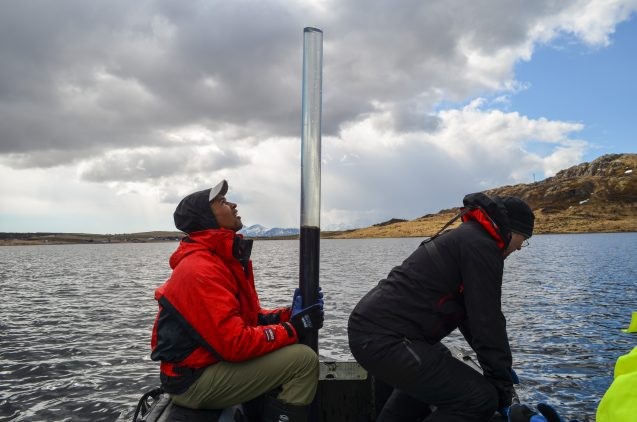Data on Past Climates Key to Predicting Future, Scientists Say
An international team suggests that research centers around the world using numerical models to predict future climate change should include simulations of past climates.
An international team writing in the journal Science this week suggests that research centers around the world using numerical models to predict future climate change should include simulations of past climates in evaluating their models.
As more and better information becomes available about the planet’s past climates, these data become increasingly relevant for improving understanding of how the system is affected by greenhouse gas levels, say the study’s authors. Unlike historical climate records, which typically go back only a century or two, paleoclimate data cover a vastly broader range of conditions, spanning a large range of temperatures, precipitation patterns and ice-sheet distribution, they say.
“The geological record offers insight into the long-term consequences of ongoing carbon emissions. To find an analog in Earth history where CO2 was as high as projected for the end of this century, we have to go back many millions of years,” said Bärbel Hönisch, a paleoclimate researcher at Columbia University’s Lamont-Doherty Earth Observatory and coauthor of the paper. “When climate models successfully reconstruct such ancient and historical climate patterns, they are more likely to produce meaningful projections of future climate changes.”

Typically, climate scientists evaluate their models with data from historical weather records, such as satellite measurements, sea surface temperatures, wind speeds, cloud cover and other parameters. The model’s algorithms are then adjusted until their predictions mesh with the observed climate records. Thus, if a computer simulation produces a historically accurate climate based on the observations made during that time, it is considered fit to predict future climate with reasonable accuracy.
“We find that many models perform very well with historical climates, but not so well with climates from the earth’s geological past,” said the paper’s lead author, Jessica Tierney, a professor at the University of Arizona and former postdoctoral researcher at Lamont-Doherty.
One reason for the discrepancies are differences in how the models compute the effects of clouds, which is one of the great challenges in climate modeling, Tierney said. Such differences cause different models to diverge from each other in terms of what climate scientists refer to as climate sensitivity: a measure of how strongly the earth’s climate responds to a doubling of greenhouse gas emissions.
Several of the latest-generation models being used for the next report by the Intergovernmental Panel on Climate Change have a higher climate sensitivity than previous iterations. This means that if you double carbon dioxide emissions, they produce more global warming than their previous counterparts. “So the question is, how much confidence do we have in these very sensitive new models?” said Tierney.
There is little debate among scientists that human fossil-fuel use is warming the earth at a speed with no known precedent, but different models generate varying predictions for the future. Some forecast an increase as large as 6 degrees Celsius by the end of the century. While the atmosphere has seen carbon dioxide concentrations much higher than today’s level of about 415 parts per million, there is no time in the geological record that matches the speed at which humans are contributing to greenhouse gas emissions.
In the paper, the authors applied climate models to several known past climate extremes from the geological record. These include the Eocene epoch, about 50 million years ago, when global carbon dioxide was at 1,000 parts per million, and there were no large ice sheets. The authors also looked at the Cretaceous period, about 90 million years ago, when dinosaurs ruled the earth. That period was even warmer, with carbon dioxide levels up to 2,000 parts per million and the oceans as warm as a bathtub.
Some models are much better than others at producing the climates seen in the geologic record, which underscores the need to test climate models against paleoclimates, the authors say. In particular, past warm climates such as the Eocene highlight the role that clouds play in contributing to warmer temperatures under increased carbon dioxide levels.
“We urge the climate model developer community to pay attention to the past and actively involve it in predicting the future,” said Tierney.
Adapted from a press release by the University of Arizona.
